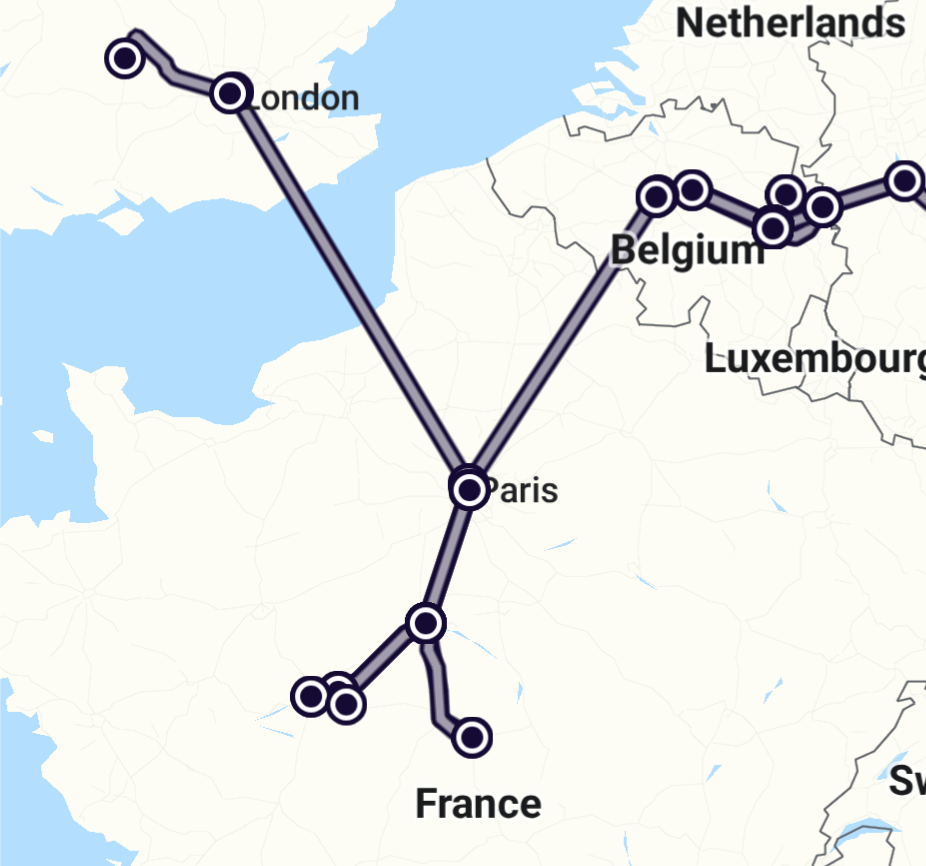To start our second week, we made the multi-transfer journey to Liege - a city in the east of Belgium near the borders with the Netherlands and Germany. The journey was fairly straightforward but long, with transfers in Paris (requiring taking the metro across the city), Brussels, and between stations in Liege. Including transfer time, we arrived about 6 hours after departing Orléans.
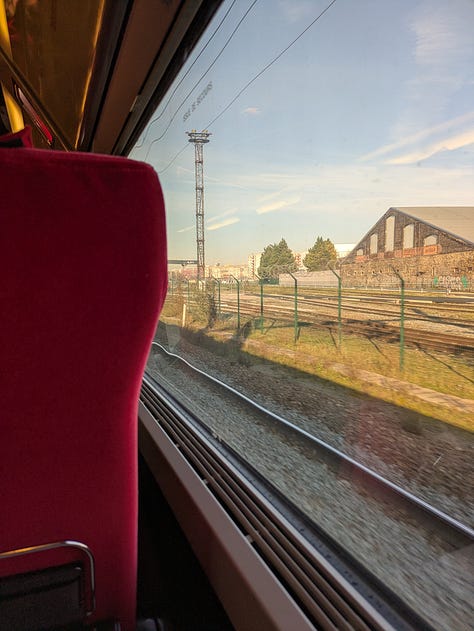
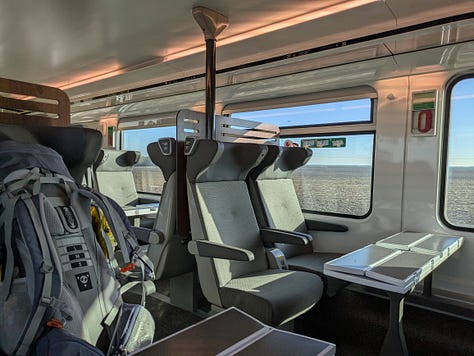

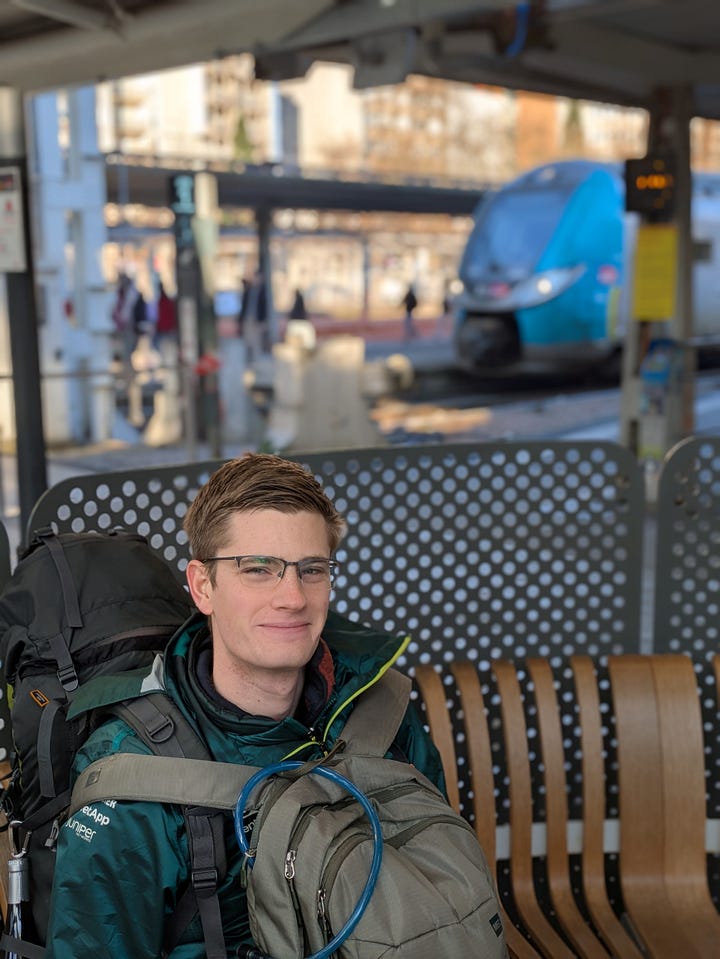
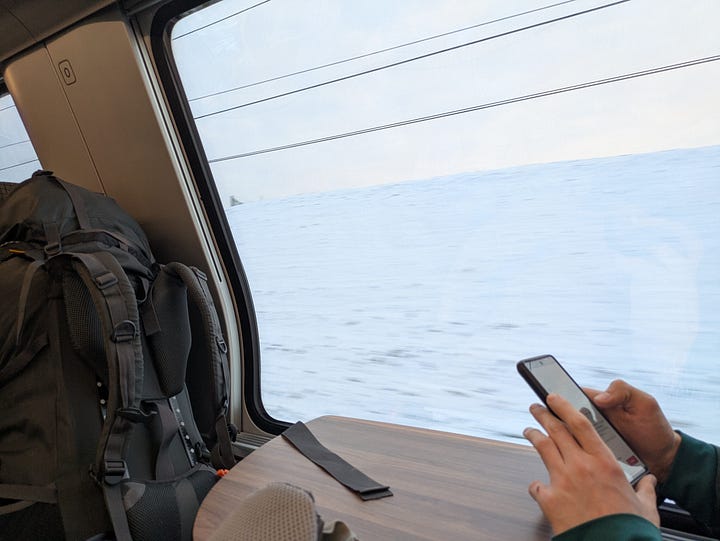
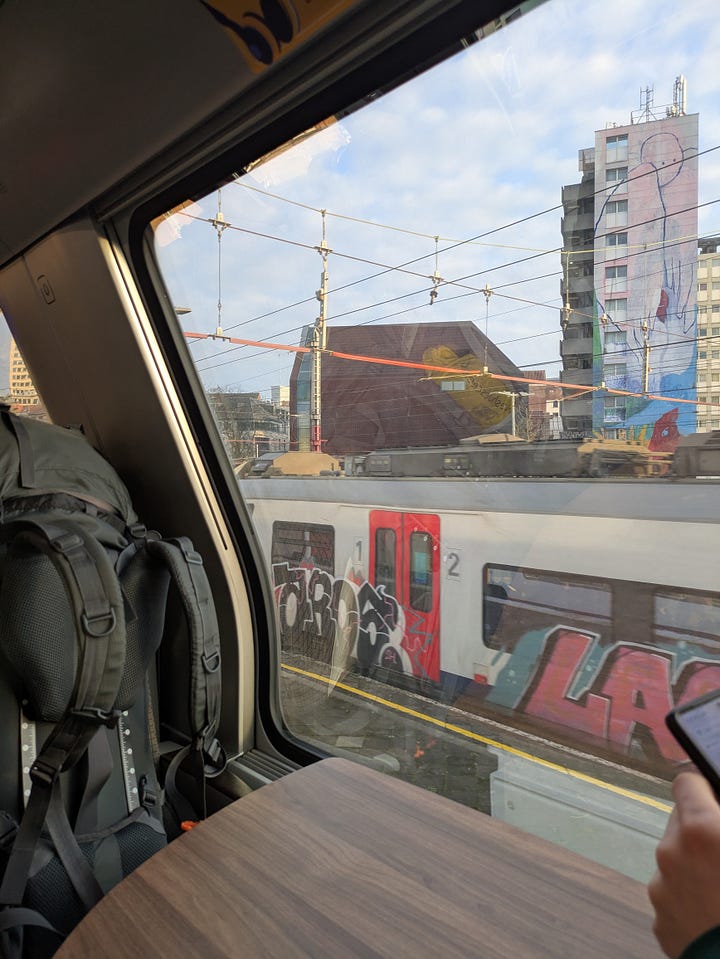
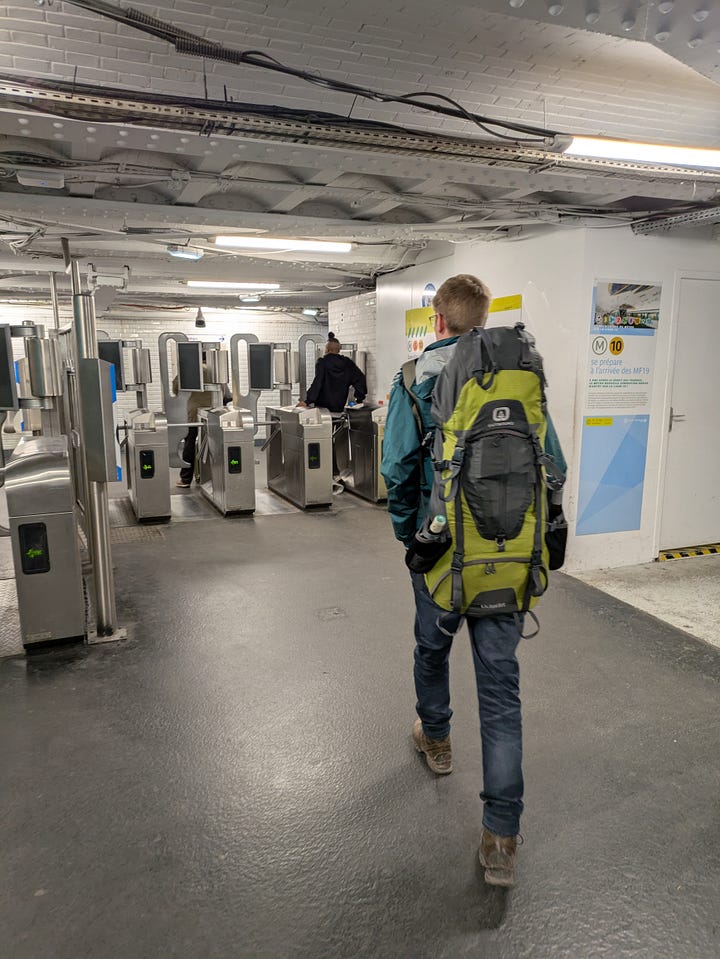
From what we'd read Liege isn't a particularly popular destination for tourists, many people seem to skip it for nearby places such as Aachen or Brussels. Liege turned out to be a strange place. It has some very nice parts with parks, restaurants and art installations. There are also quite a few derelict buildings, a fair amount of visible poverty/homelessness, and regularly people will come and ask for money while you're waiting at the train station. It worked well as a base though and overall we enjoyed our time in the city.
The main reasons we ended up in Liege were:
Cheap Airbnb compared to other nearby cities, coming in at £257/$456 CAD for the week. The place we found also had a kitchen and a washing machine.
Many other cities easily accessible by train, including Brussels, Aachen, Cologne, and Maastricht within about an hour.
Mary has some friends that live not far away in Germany and the Netherlands, so we wanted to try and catch up with them.
We'd done some hiking in the Eifel last spring and enjoyed the area, depending on the weather and our schedule it may be possible to check out some other areas.
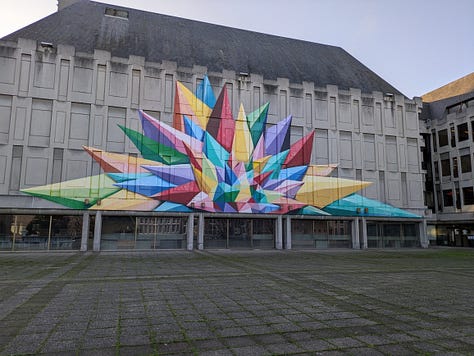


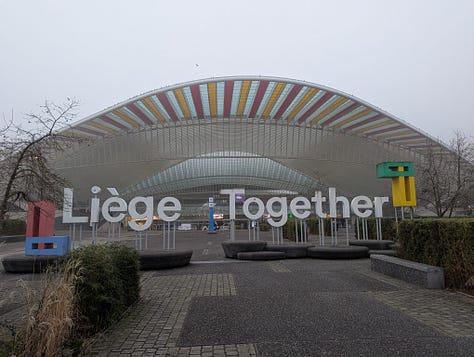
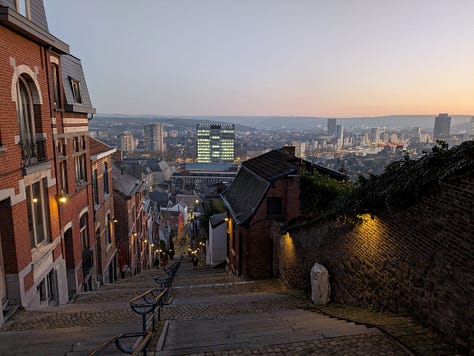
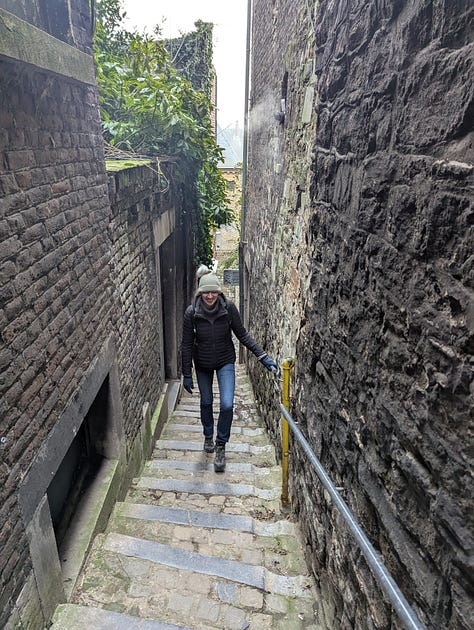
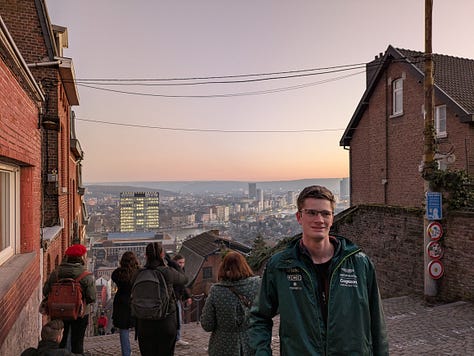
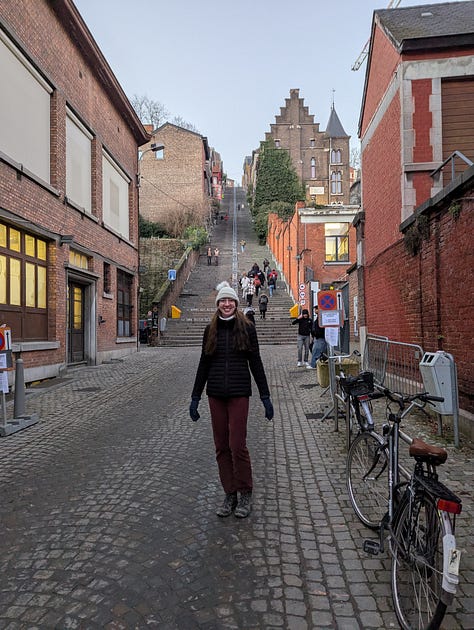
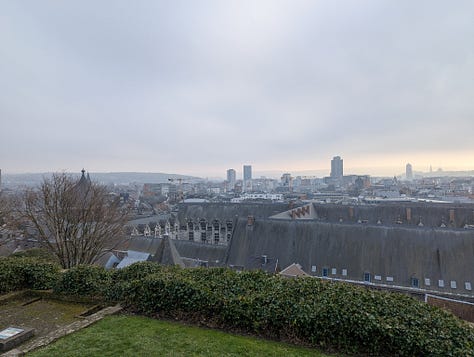
Day Trips
As with last week, we made good use of our eurail passes to explore the area nearby.
15-Jan-2025: Brussels
Today, we took the train to Brussels, where we were greeted by another guide from International Greeter. Nico has recently retired and has lived in Brussels his entire life. Though he trained in art and history, Nico had a career in IT. As a former certified Brussels city tour guide, he gave us a detailed and engaging tour of the city. We started uptown before making our way downtown then to the more touristy areas, with Nico sharing stories or anecdotes about nearly every building, statue, square, and street mural along the way.
The day was foggy and slightly misty - Nico mentioned a Belgian saying, something along the lines of “mosquito pee.” Sounds about right.
We were able to appreciate diverse art and architecture throughout the city. Art nouveau with its fancy curviness and ornateness first appeared in Brussels in the 1890s before spreading to other parts of Europe. Later (1920s onwards) the styles became less curvy and more geometric in the art deco style.
Brussels is also home to many street art murals, notably comic strip pieces that have been around since the early 90s, celebrating famous Belgian comic strips such as The Adventures of TinTin and the Smurfs. We also saw lots of statues, including the famous statue of a boy peeing - Manneken Pis - who even has a whole museum dedicated to all its costumes.
We walked through traditionally working class areas downtown that are being protected from too much gentrification due to government ownership of social housing. There were many antique and vintage shops- including an open air flea market. Nico also pointed out several “impasses”, narrow areas between buildings where the very poor had lived since medieval times and suffered due to overcrowding and horrific sanitary conditions. In the 19th century, with industrialization, these issues became exacerbated and were finally addressed by the city. This led to elimination of the impasses or transformation into quaint courtyards etc. Nico explained that the river Senne which runs through Brussels was covered during this era as an attempt to deal with the sanitary issues in the city.
Nico also commented that over the years Belgium was under the rule of many different countries (Austria, Germany, France, Spain, The Netherlands). As such much of the best Belgian art residences in foreign capitals rather than Belgian galleries.
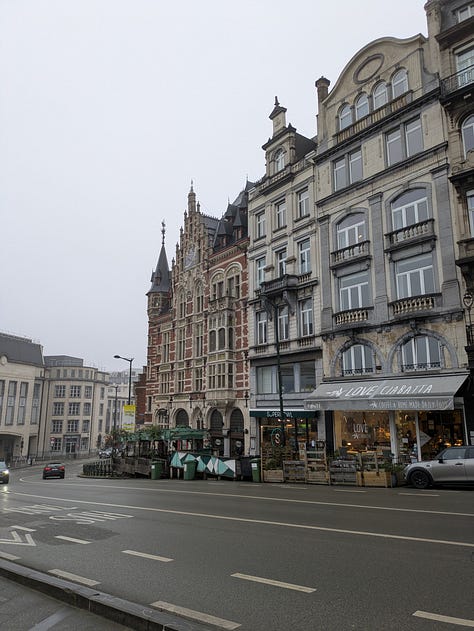
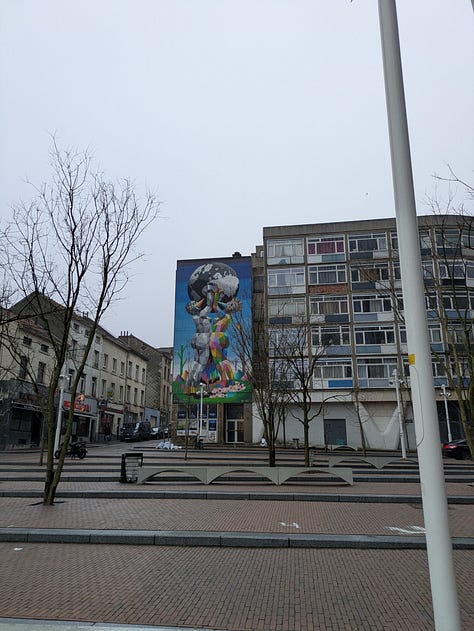
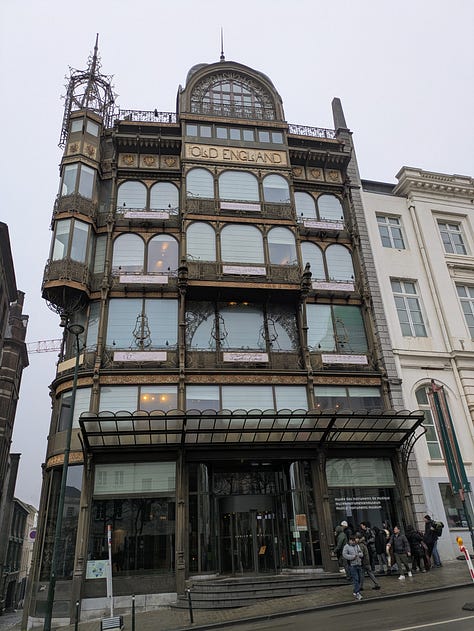
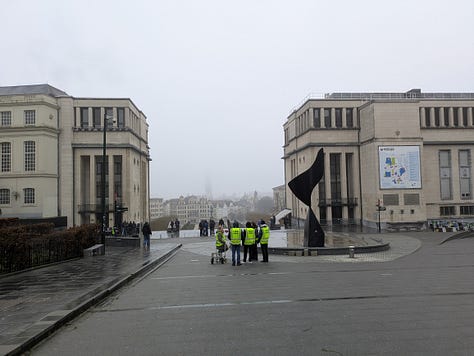
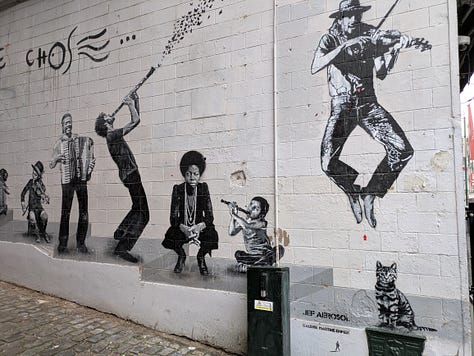
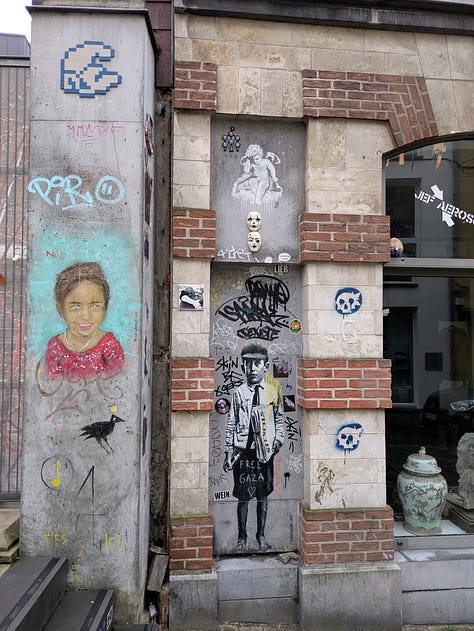
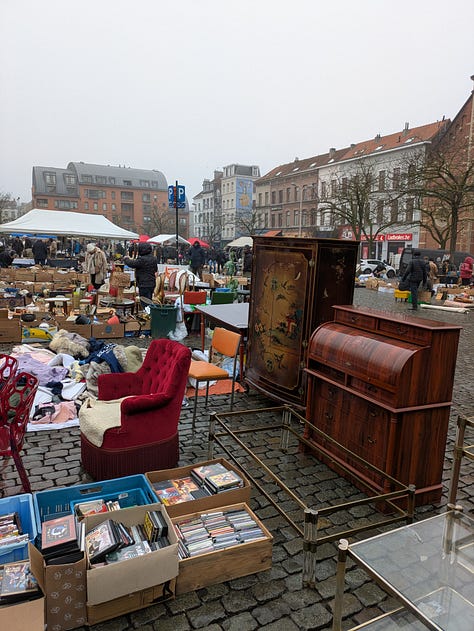
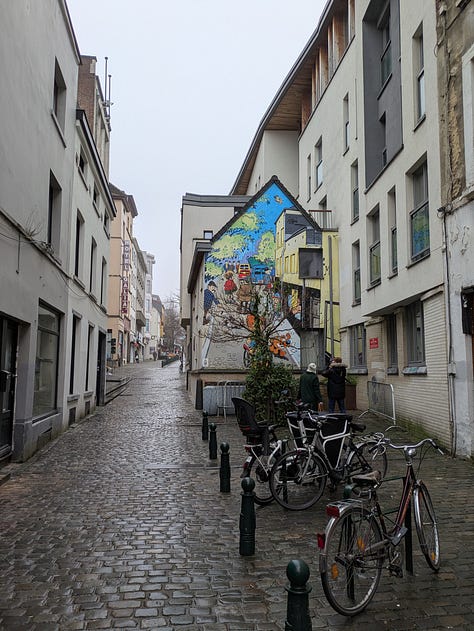
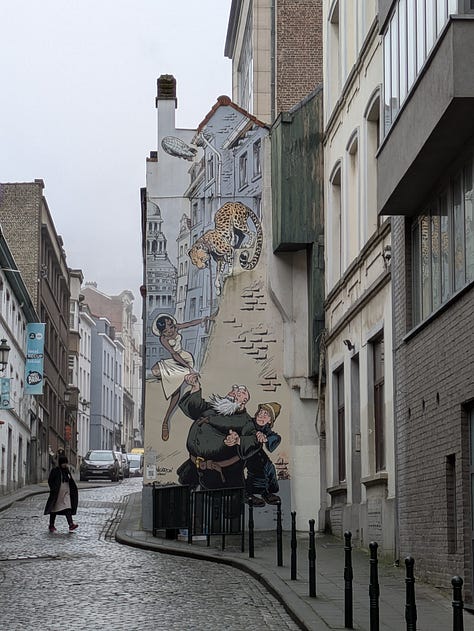
Belgium is at the centre of Europe and due to its complex history is a bit quirky. There is a Flemish region, a French region, the Brussels region and a German region, all of which have their own separate governments. Belgium is also linked to the Congo which King Leopold II declared his private property in 1885. The Congo became a Belgian colony in 1908 and didn't achieve independence until the 1960s.
Brussels is also the de facto capital of the EU, so we visited the European parliament. Unfortunately didn't have our passports so we couldn't go inside.
We walked around the downtown area with the shiny golden facades of the Grande Place and the pretty Galleries. There was a very appropriate ratio of chocolate shops to non-chocolate related shops.
We also went to the Cathedral which… looked like a cathedral. We walked around more and had a very misty view of the triumphal arch before heading back to the train.
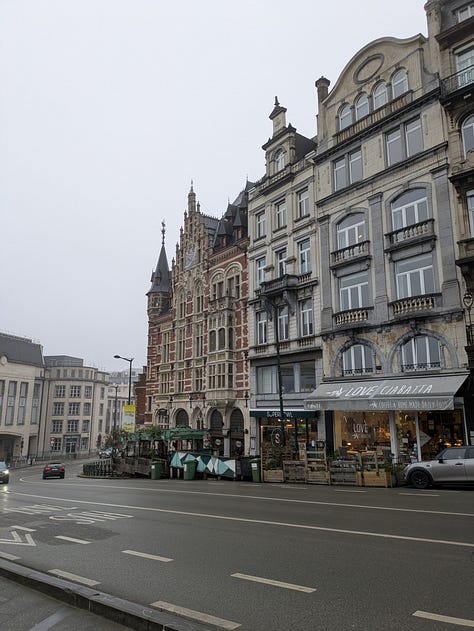
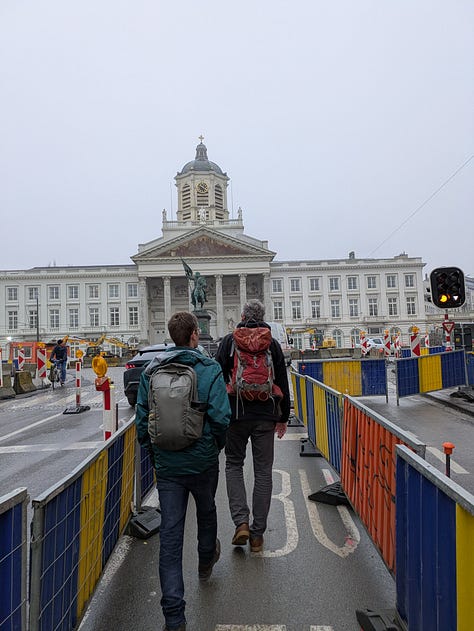


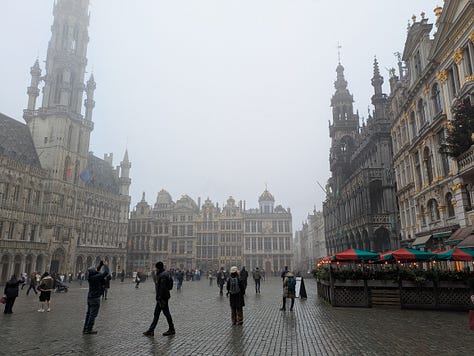
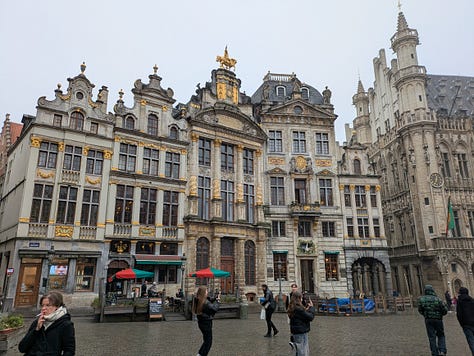
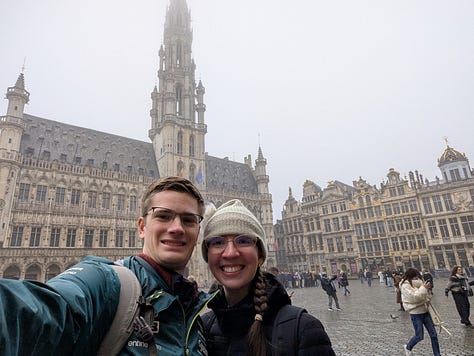


16-Jan-2025: Leuven
Today we visited Leuven, a small university city just east of Brussels. We stopped by the tourist office and found two self guided walks that were conveniently imported to Google maps via a QR code. The first tour meandered past street art dispersed around the city while the second was a more general set of notable sites. The most notable were:
The ornate Stadhuis (Town Hall) built 1439-1469.
UNESCO listed Saint Peter's Church housing paintings by the Flemish master Dieric Bouts and others. The collection includes Bouts’ “The Last Supper” which is the first Flemish panel painting to depict the event.
Klein Begijnhof and Groot Begijnhof. Two communities of lay religious women who lived in community without taking vows or retiring from the world. Both were founded in the 13th century and Groot Begijnhof is UNESCO listed.
Leuven is the birthplace of Stella Artois beer (not Belgium’s best beer export in Scott’s option). We walked past the original brewery and nearly every bar had at least one Stella sign visible.
Overall, Leuven was a pleasant and lively city with the energy that comes from sizable university population. After walking around for a few hours we grabbed some frites before catching the train back to Liege.


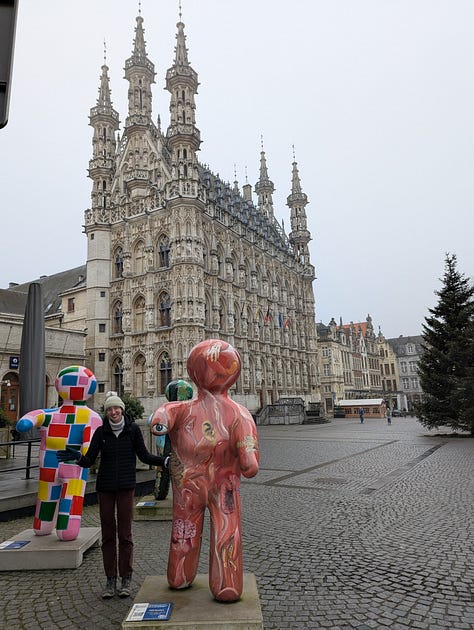
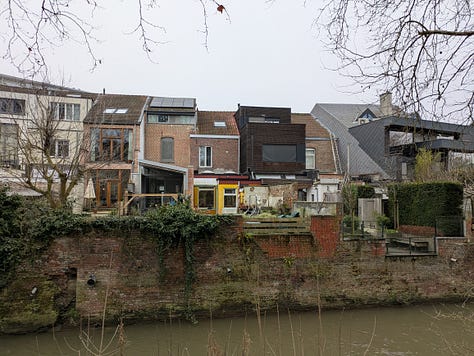

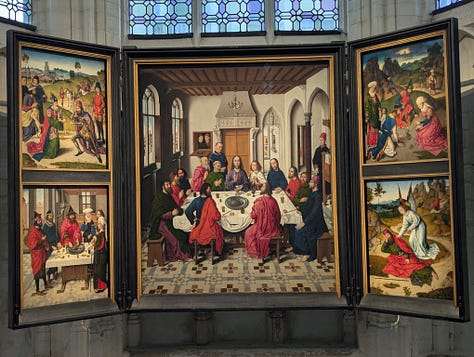
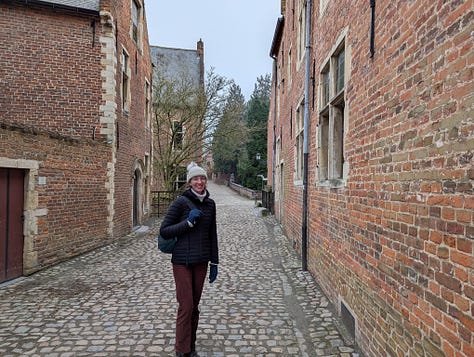
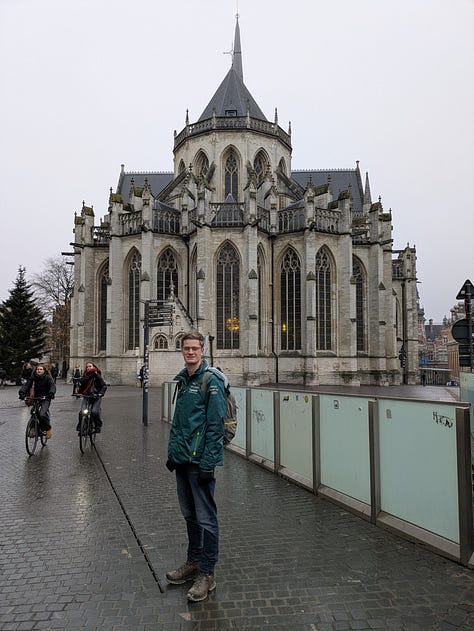
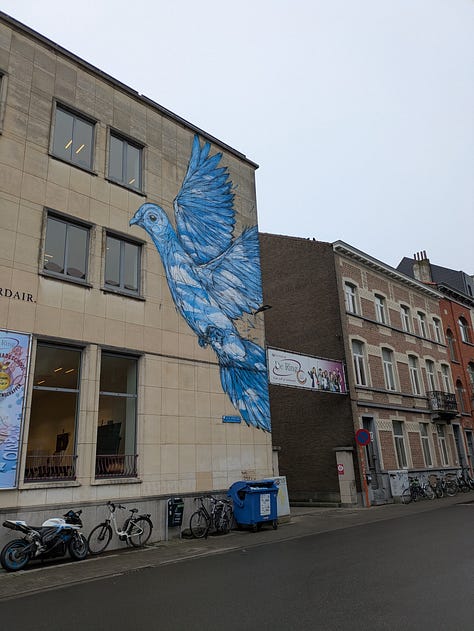
17-Jan-2025: Monschau
Today we made a trip to the German town of Monschau in the Eifel hills. The journey from Liege was a bit tedious requiring a train to Aachen followed by an expensive bus (€7.30 per person each way) to Monschau - somewhere around 2-2.75 hours each way depending on connections.
Monschau is a small town and the old centre has a number of protected buildings that make it quite picturesque. It is a bit touristy, although since we were visiting in the low season it was fairly quiet.
After a quick walk through the town, we headed out for a hike through the Eifel hills. Setting off to the west, we soon hit an oddity of European borders. Today the Vennbahn ("Fen Railway" in German) is a cycling and walking path. Other than occasional information boards it looks like any other former railway. However, it used to be an important industrial railway linking resources in the Eifel to Aachen and under the Treaty of Versailles the line and its track were ceded by Germany to Belgium. To this day, the path of the Vennbahn is Belgian territory and creates a number of German enclaves separated from the rest of Germany by a railway width strip of Belgium. Now the guard points (used to prevent coffee smuggling after the second world war) are gone and you can wander back and forth across the borders a dozen times without realizing you've left Germany.
Our walk continued up and down valleys, along rivers and streams, and back towards Monschau with only views across the Eifel, a couple deer, and snow dusted (and sometimes a bit precariously icey) paths for company. Our route can be found here.
Back in Monschau, we took advantage of a few more photo opportunities and sampled an apfelstrudel before attempting to catch a bus back to Aachen. Unfortunately we had to wait nearly an hour for a bus that was supposed to come every 30 minutes. This necessitated a sprint across Aachen to (barely) make the connection for the train back to Liege - one bit of excitement to punctuate an otherwise layed back winter ramble.
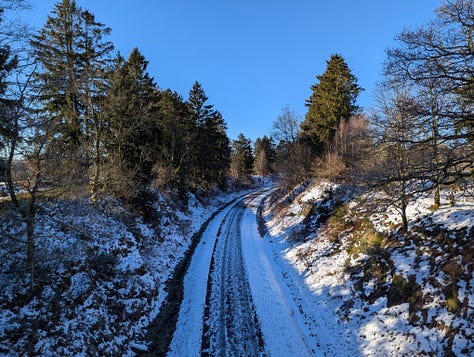
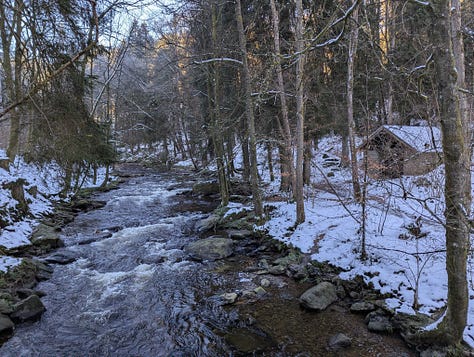
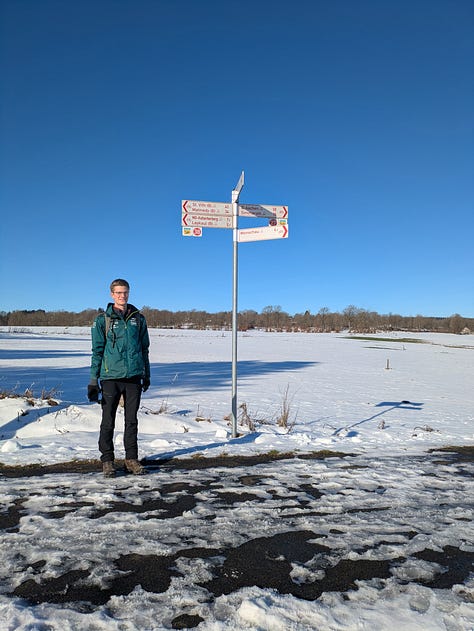
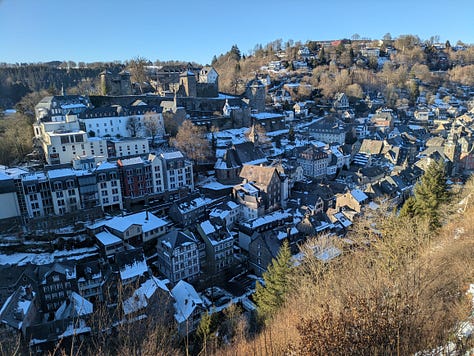
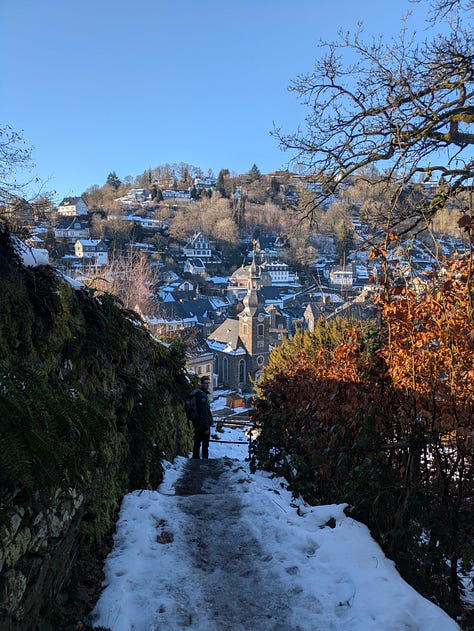
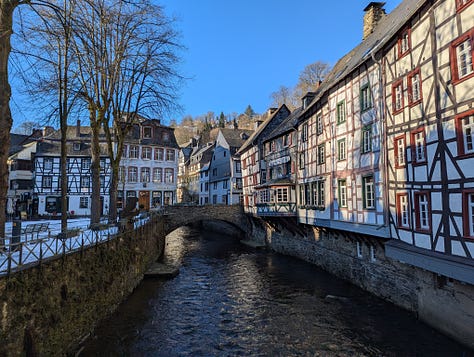
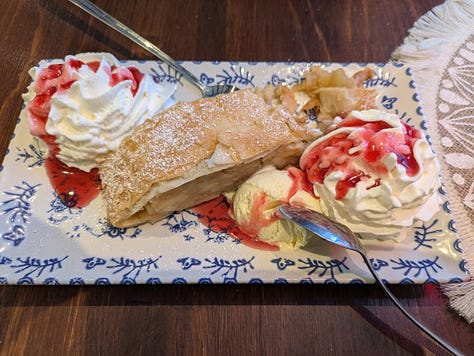
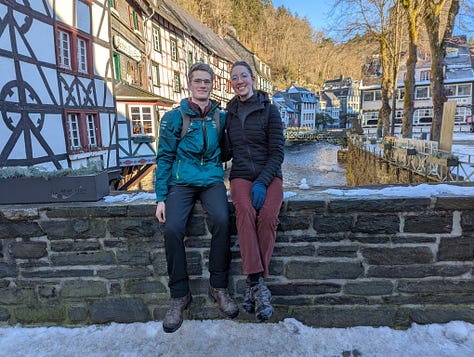
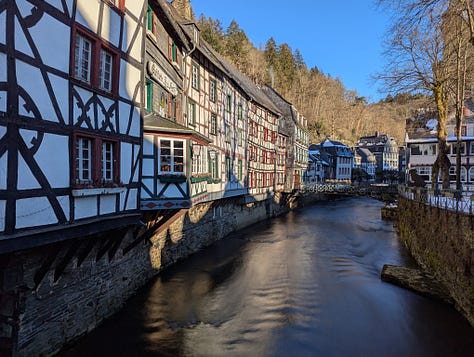
18-Jan-2025: Aachen
Today we caught a train back to Aachen both to take a look around the city and to visit Mary's friend Isabelle.
Other than visiting Isabelle, the main attraction was the UNESCO listed Aachener Dom (Cathedral). The oldest part of the cathedral, the octogonal Palatine chapel, was built by Charlemagne as part of his palace around 798. Other than the chapel, the rest of Charlemagne's palace in Aachen has disappeared. Over the centuries, the Dom has been expanded but Charlemagne's chapel remains at the centre. Charlemagne's final resting place is the Dom and there is an ornate shrine that holds his bones. The Dom was also the coronation site for German kings. From 936-1531, 30 kings and 12 queens were crowned in Aachen.
Thanks for spending the day with us Isabelle ❤️
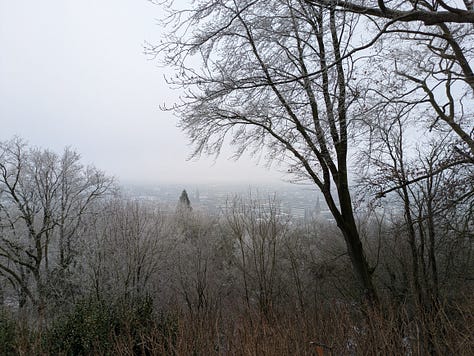
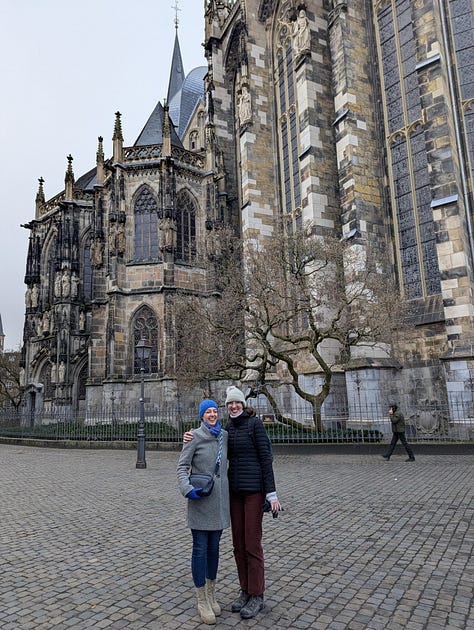
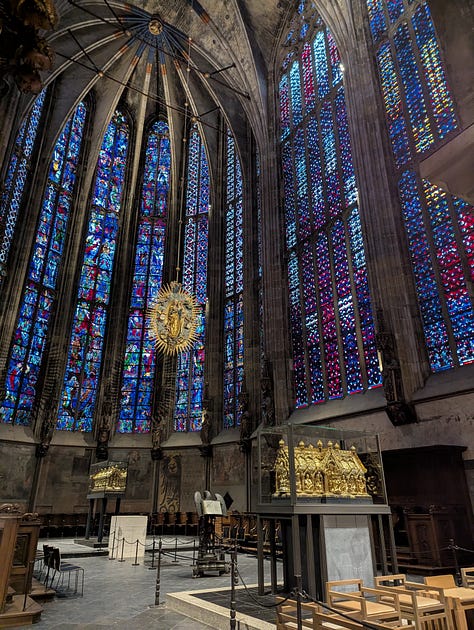
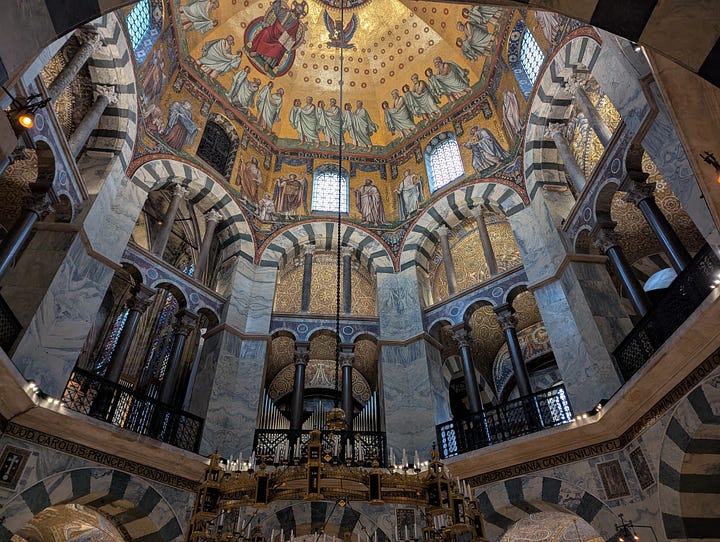

19-Jan-2025: Maastricht and Liege
We had a bit of a quiet day today, taking a short train ride to Maastricht (which we had previously visited in Spring 2024, coincidentally when also visiting Isabelle) and wandering around for a couple of hours before returning to Liege.
Once back in Liege, we popped into the cathedral for a quick look around before strolling through the seemingly never ending Sunday market along the river (and sampling a hot waffle that one vendor was selling). We stopped by a microbrewery just up the road from our Airbnb, then walked through the “Terrasses des Minimes” (a set of terraced parks on the hillside overlooking Liege) before calling it an afternoon.
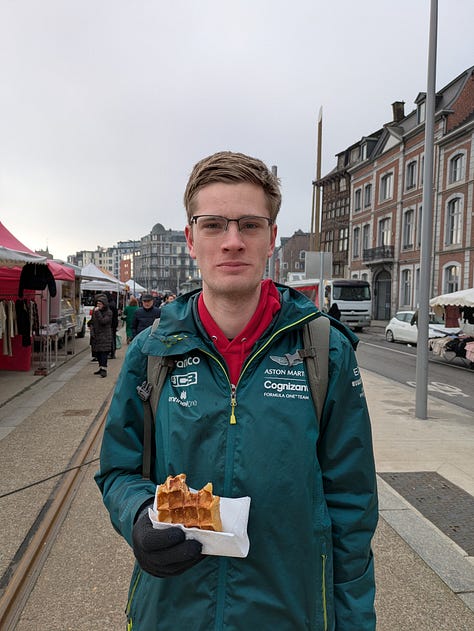
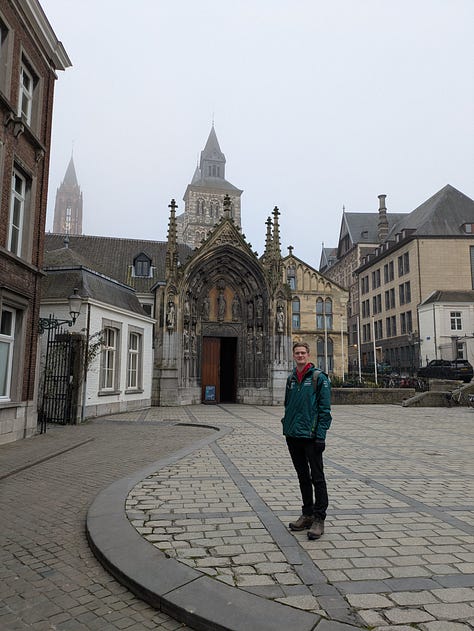
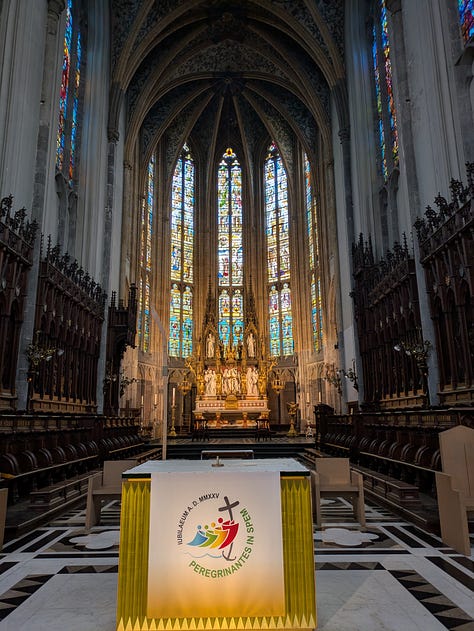
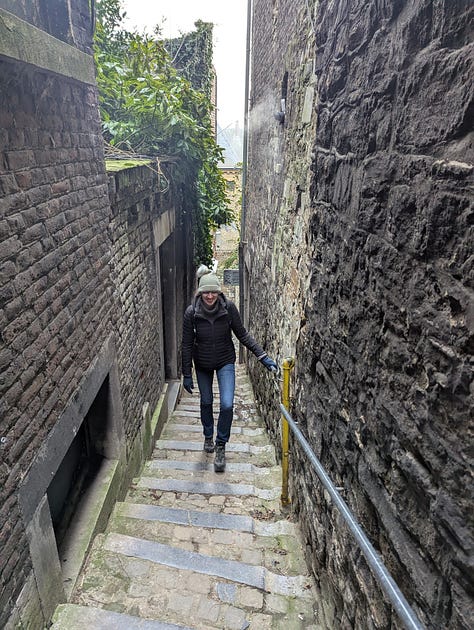
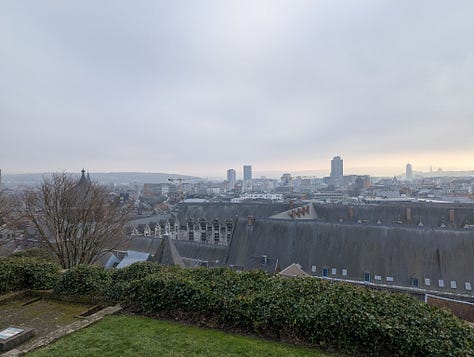
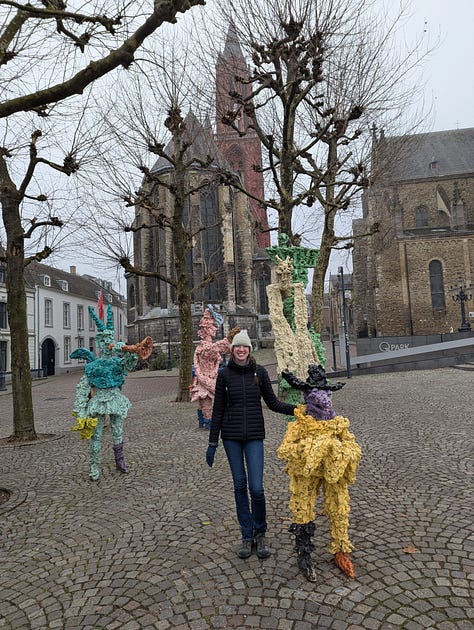

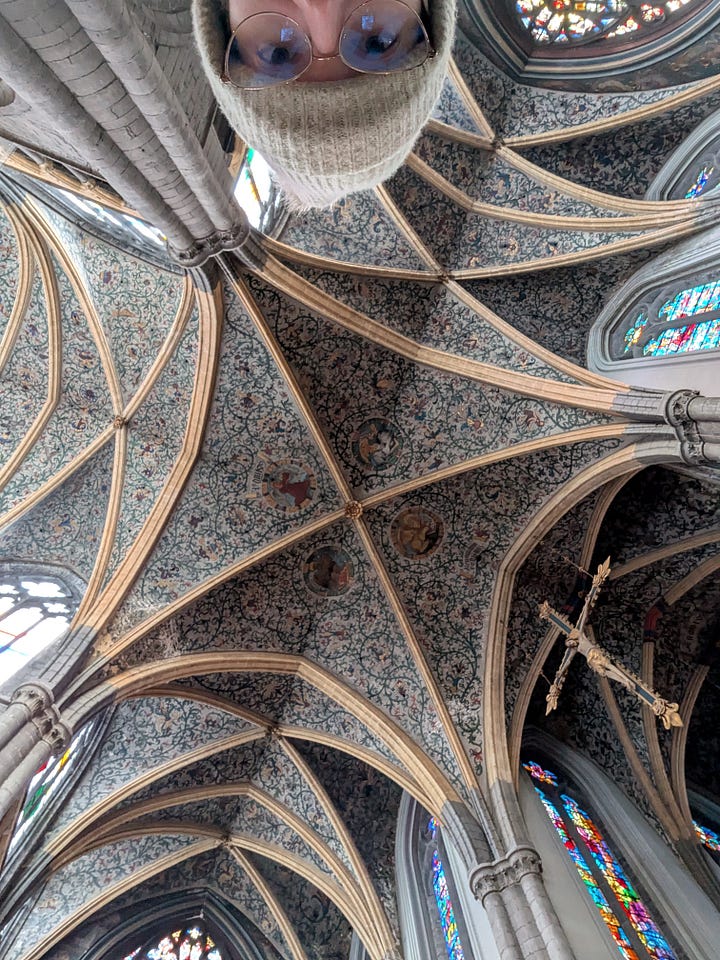
20-Jan-2025: Cologne
Today we took the train to Cologne to see two friends that Mary worked with in Chad. We arrived in the morning and had some time to explore the city center by foot and see the Dom (another UNESCO listed cathedral) among other things. An app called “SmartGuide” provided a convenient self guided audio tour through the city and explained a bit about each stop we passed.
We met Ester in the train station and had some coffee while waiting for Anna to arrive by train from the Netherlands.
We proceeded to spend several hours chatting on and on (mostly about MSF and Chad related topics) before heading back to Liege on the train.

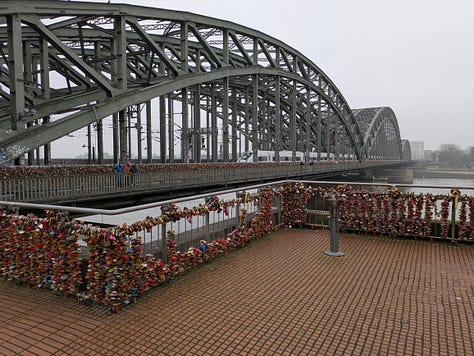
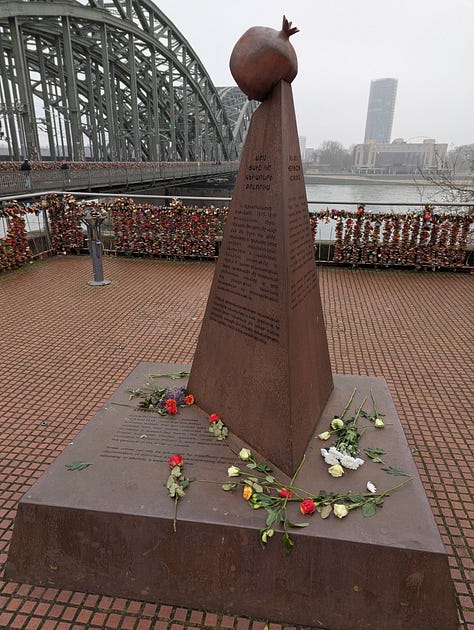

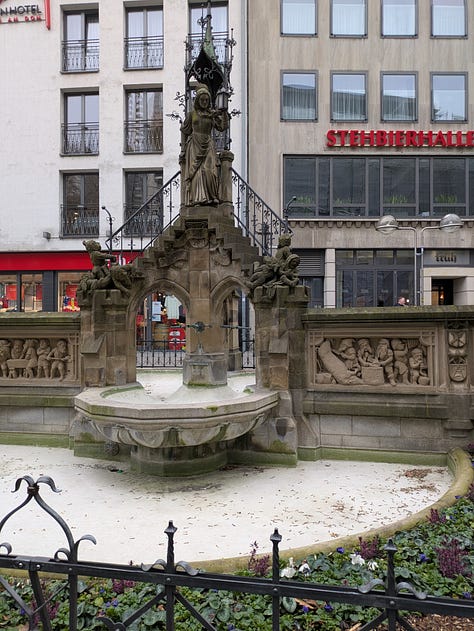
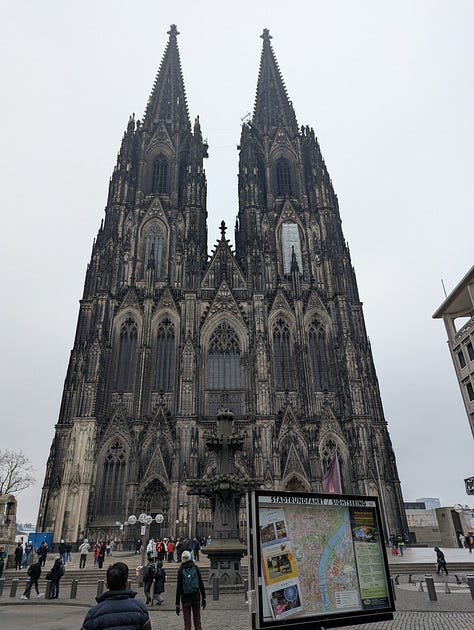
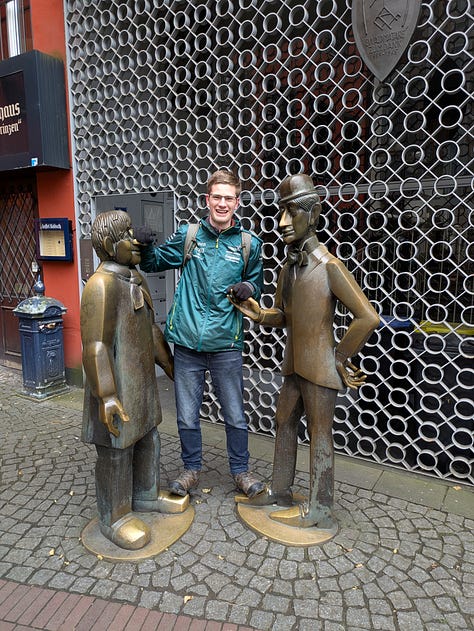
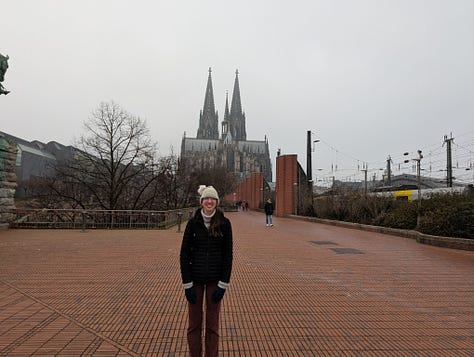
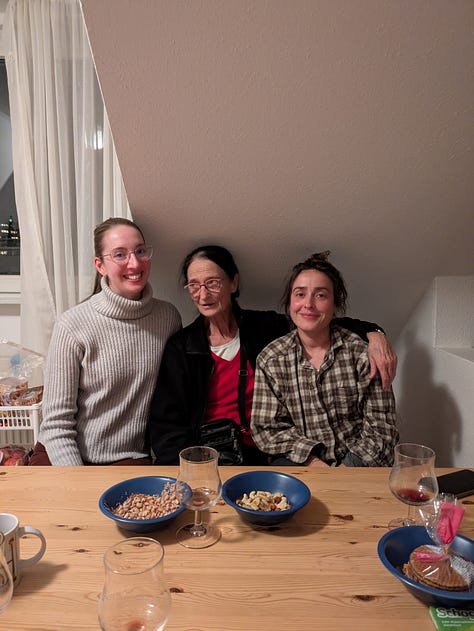
Travel Stats
Due to requiring a short connecting train to the main station in Liege each day, we took more trains this week compared to last week. This week's numbers are:
25 individual trains (taking the total up to 39).
1275km covered by train (taking the total to 2715km)
15 hours and 7 minutes spent on the train (taking the total to 29 hours and 49 minutes) - at least based on scheduled journey durations.
This week we walked a bit less. Mary's Fitbit clocked up 95.6km or about 13.7km/day. This brings the two week total up to 222km.
Another Way to See Where We've Been
To keep track of individual places we've been, we've set up a Google list. In theory, each place we've mentioned (and probably a few more) should be included - as long as we remember to add them. Hopefully we can keep this up to date while we go! Check it out here: 2025 Trip Google List
To Be Continued…
That concludes our week based in Liege. After all the visiting and border hopping, we're heading south to the Alsace!





